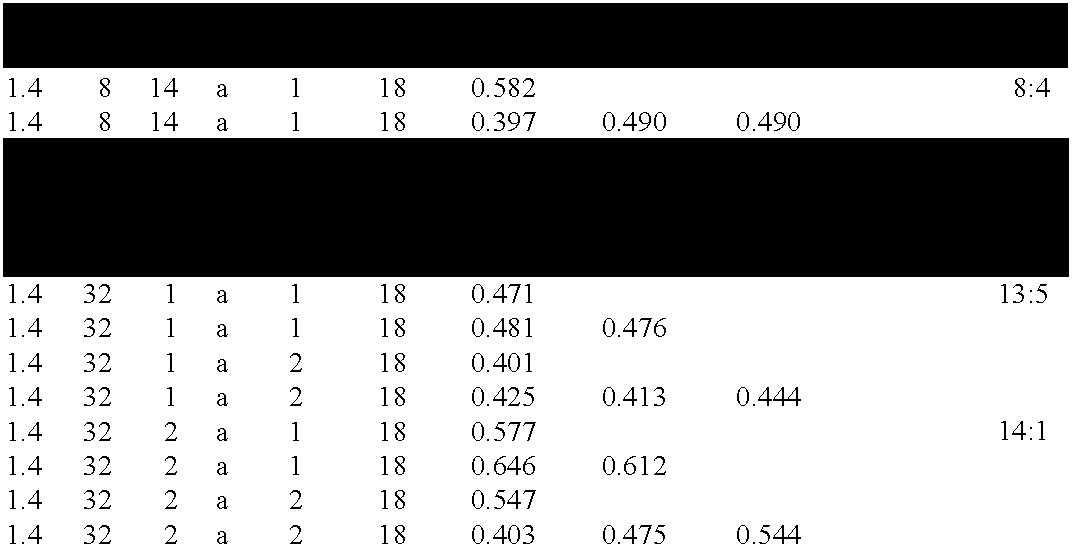Chitinase encoding DNA molecules from cotton expressed preferentially in secondary walled cells during secondary wall deposition and a corresponding promoter
a technology of chitinase and dna molecules, which is applied in the field of chitinase encoding dna molecules from cotton expressed preferentially in secondary walled cells during secondary wall deposition and a corresponding promoter, can solve the problems of only achieving the goal, substantial deterioration, and jeopardizing the production of quality yams and fabrics, so as to improve fiber cellulose content, improve agricultural productivity, and improve the effect of quality
- Summary
- Abstract
- Description
- Claims
- Application Information
AI Technical Summary
Benefits of technology
Problems solved by technology
Method used
Image
Examples
example 1
Identification of F285, a cDNA Clone Preferentially Expressed in Fibers During Secondary Wall Deposition
[0140]Differential display as described in Liang et al., “Differential Display of Eukaryotic DNA by Means of the Polymerase Chain Reaction,”Science, 257: 967–970 (1992), which is hereby incorporated by reference in its entirety, was used to identify a gene that was differentially expressed in secondary wall stage cotton fibers. The technique has the following steps: (a) two or more different total RNA populations are reverse transcribed in the presence of an anchored oligo dT (e.g. dT12-XY, where X and Y denote A, C, G, or T, disallowing TT) to yield cDNA fragments of an mRNA subpopulation; (b) cDNA fragments are amplified by PCR in the presence of the same anchored oligo dT, an arbitrary sequence 10 mer oligonucleotide, and 35S- or 33P-dATP+dNTPs; and (c) amplified cDNA fragments are separated on non-denaturing sequencing gels by size and detected on film by autoradiography. cDNA...
example 2
Expression of F285 in Fibers During Secondary Wall Deposition
[0143]Northern blot analysis was performed on total RNA extracted from various tissues of greenhouse-grown Gossypium hirsutum cv. Coker 312 (natural light and ca. 32° C. day / 22° C. night temperature). Total RNA (15 μg / lane) was loaded on a 1.2% agarose gel, electrophoresed, transferred to nitrocellulose membrane, heat fixed (1.5 h; 80° C.), and hybridized with 32P-labeled F285 probe (65° C., overnight). The membrane was washed (0.1×SSC, 0.1% SDS, 65° C., 15 min), and the film was exposed to autoradiography film (17 h; −80° C.). The same blot was stripped and reprobed with 32P-labeled 18S ribosomal RNA probe as control.
[0144]The Northern blots indicated that the gene F285 is expressed in greenhouse-grown fibers only at the secondary wall stage at 18, 24, and 27 DPA (FIG. 2). There was no evidence of expression in fibers during primary wall deposition at 8 DPA, or in leaves, stems, roots, or ovules stripped of fiber at 8, 18...
example 3
Sequencing of F285 and Comparison of its Translated Amino Acid Sequence to Other Proteins
[0146]Based on the sequence of the F285 cDNA, a 31-mer oligonucleotide primer just before the polyT tail was synthesized (5′ CAATGGCTATATGTGACTCATTCAATCACAC; SEQ ID NO: 12) and used together with the SK primer (CGCTCTAGAACTAGTGGATC: SEQ ID NO: 13) in PCR screening of a UniZAP-XR cDNA library from mRNAs of 21 DPA Acala-SJ2 cotton fibers (Stratagene, La Jolla, Calif.; kindly provided by Dr. D. P. Delmer). The PCR reaction constituted 5 μl of boiled library lysate as template, 1 μM of each primer, 200 μM of each dNTP, 200 μM MgCl2, and 0.5 U Taq polymerase. The PCR reaction conditions were: 34 cycles of 95° C. (30 min), 55° C. (1 min), and 72° C. (2 min), followed by extension at 72° C. (5 min). The PCR products were gel-purified, cloned into the TA cloning vector (InVitrogen, Carlsbad, Calif.), and completely sequenced on both strands. Analysis of the generated 1273 bp-length cDNA revealed a singl...
PUM
| Property | Measurement | Unit |
|---|---|---|
| temperature | aaaaa | aaaaa |
| temperature | aaaaa | aaaaa |
| temperature | aaaaa | aaaaa |
Abstract
Description
Claims
Application Information
 Login to View More
Login to View More - R&D
- Intellectual Property
- Life Sciences
- Materials
- Tech Scout
- Unparalleled Data Quality
- Higher Quality Content
- 60% Fewer Hallucinations
Browse by: Latest US Patents, China's latest patents, Technical Efficacy Thesaurus, Application Domain, Technology Topic, Popular Technical Reports.
© 2025 PatSnap. All rights reserved.Legal|Privacy policy|Modern Slavery Act Transparency Statement|Sitemap|About US| Contact US: help@patsnap.com



